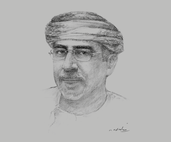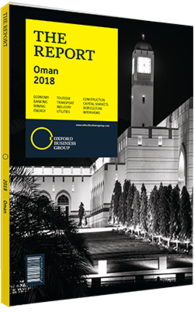Fuad bin Jaafar bin Mohammed Al Sajwani, Minister of Agriculture and Fisheries Wealth: Interview

Interview: Fuad bin Jaafar bin Mohammed Al Sajwani
How can food import dependence be reduced as Oman works towards its ninth five-year plan goals?
FUAD BIN JAAFAR BIN MOHAMMED AL SAJWANI: Oman is highly self-sufficient in fish. In 2014 our self-sufficiency in fish peaked at 216%, and in 2016 it remained high at 176%. Moreover, the Ministry of Agriculture and Fisheries Wealth (MAFW) is planning to increase production from wild fisheries and aquaculture, from 280,000 tonnes in 2016 to 480,000 by 2020 and more than 700,000 by 2025.
To achieve our production goals, the MAFW plans to improve coordination with the private sector to both build new fishing ports and upgrade existing ones. There are 22 existing fishing ports, with others under construction and in the design phase. These ports will provide important infrastructure for both local and international fishing fleets to land and process fish, and provide services to other supportive industries. The MAFW is also developing aquaculture and an industrial fishing fleet in the Indian Ocean.
What role will commercial fishing and aquaculture play in meeting the ninth five-year plan goals?
AL SAJWANI: In 2017 the MAFW initiated a programme to develop an industrial fishing fleet, which investors have been invited to participate in. The overall goal has been to upgrade the current traditional, artisanal fishing fleet that operates on Oman’s coastal areas to an industrial fleet focused on exploiting fish resources in the Omani Exclusive Economic Zone and beyond. Currently, there are 22,720 traditional boats, 700 artisanal fishing vessels, and 134 coastal fishing vessels.
To ensure a sustainable harvest of fish, the MAFW is developing bylaws and guidelines for the operation of the industrial fishing fleet, which will permit large industrial fishing vessels to utilise the pelagic resources in the Arabian Sea and the Indian Ocean.
Aquaculture will also play an important role in this regard, and the strategy aims to produce 200,000 tonnes by 2030. The first fin fish cage farm was commissioned in July 2017 in the Quriyat coastal area to produce 3000 tonnes of high-quality sea bream. Two other farms with a total production capacity of 6000 tonnes of sea bream will be launched by the end of 2017. Preparation efforts to open two shrimp farms, as well as two abalone farms in the south, are ongoing.
What is the state of downstream processing and value addition in the fishing industry?
AL SAJWANI: The fish processing industry grows in line with fish production in order to cope with additional quantities of fish landed. There are 52 processing and packaging facilities, 26 of which are factories with quality control certification, which means they can export to the EU. There is one canning factory for tuna and sardines, and there are many applications from private players who wish to invest in similar facilities. There are 66 facilities for salting and drying, and four factories for fish meal and fish oil production. The MAFW is currently preparing a bylaw to regulate this important industry.
For value-added products, there is currently one factory, but the MAFW encourages investors to target this industry, as it can yield high economic returns. There are also about 400 fish outlets and shops in different regions to distribute fresh and frozen fish.
How are farmers and the MAFW dealing with depleting groundwater and increasing salinity?
AL SAJWANI: The MAFW is conducting several studies on the effects of high salinity on farms along the Al Batinah coast. These studies have many goals, including finding alternative agriculture crops that are resistant to high salinity. In terms of fisheries, the MAFW is developing the integrated aquaculture sector, where farmers can use fish in their farms to better utilise limited underground water resources. The farmers will use this water to harvest both fish and plants. The production from integrated aquaculture is expected to increase from 3 tonnes in 2014 to 30 tonnes in 2016.
You have reached the limit of premium articles you can view for free.
Choose from the options below to purchase print or digital editions of our Reports. You can also purchase a website subscription giving you unlimited access to all of our Reports online for 12 months.
If you have already purchased this Report or have a website subscription, please login to continue.

